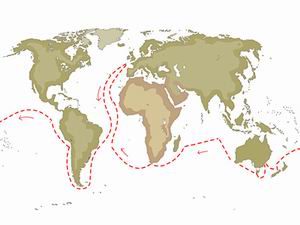 |
| http://www.adventuresbydaddy.com/wp-content/uploads/2012/04/ML_chimp-13.jpg |
Around 5 years ago, a zoologist named Lydia Luncz visited West Africa's Ta'i National Park to observe chimpanzees. What she discovered could possibly change science forever. First, she visited the southern end of the park and observed that the chimpanzees located there used stone hammers to crack open nuts. This has been observed before, so what is so different about it now? Well, she observed chimps inhabiting the northern and eastern parts of the park and noticed that they used wooden hammers as the tool for cracking nuts. The big question was, "If these animals live in the same forest, then why do they use different techniques of obtaining their food?" Luncz was curious as to why this was happening, so she observed the adult females, being that they often leave their birth community. Her finding were that the females adopted whatever technique their new community used. What does this tell us? That chimps may have developed their own cultural traditions just as we do! Lydia Luncz is the first to show us that there are actually differences in neighboring groups of chimps even though they live in the same area. It seems like the more we observe these chimps, the more similarities we find between them and ourselves.
Sources: http://discovermagazine.com/2012/dec/25-chimps-share-nut-cracking-culture
 |
| http://www.nytimes.com/imagepages/2012/05/15/science/15OBCHIMP1.html |





